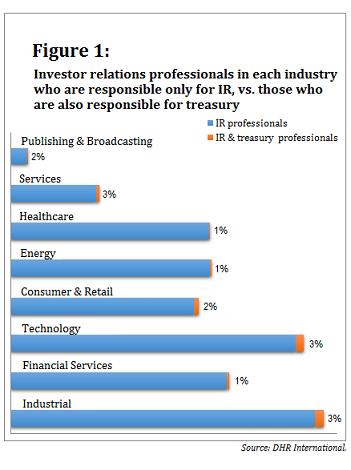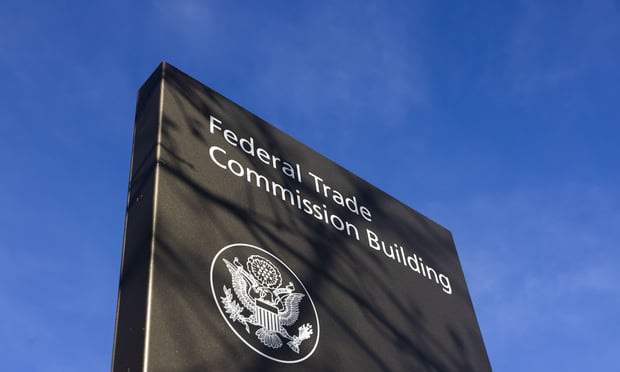 As Wall Street demands deeperknowledge about corporate financials and critical metrics, theperson who serves as steward of a company's relationship withanalysts and investors had better be astute at understanding theorganization's cash position and risk guardrails.
As Wall Street demands deeperknowledge about corporate financials and critical metrics, theperson who serves as steward of a company's relationship withanalysts and investors had better be astute at understanding theorganization's cash position and risk guardrails.
When the steward is the investor relations officer (IRO), his orher primary responsibility is to frame the brand and story of thecompany. The role has historically focused more on communicationskills than on accounting capabilities or experience providingstrategic input. But as the chief intermediary between the companyand the investment community, the IRO needs a firm grasp of allthings treasury, from cash and investment management to capitalstructure optimization, credit, and risk management.
|In the 2011 IR Magazine article “Rethinkingthe Investor Relations Director,” author Ian Roundell, head ofinvestor relations at Credit Suisse, argues that the head of acompany's investor relations function should spend timeunderstanding the financial markets, to better understand howinvestors view the company. Essentially, Roundell suggests, the IRdirector needs to develop his or her financial acumen in order toserve as the company's lead share-price strategist.
|Some executives are heeding this call to action. We havewitnessed an organic merging of the IRO and treasurer roles overthe past few years; instead of searching for a new treasurer and anIRO, companies are increasingly combining those roles in oneposition. They are recognizing that 1+1 can equal 3—that combininginvestor relations and treasury responsibilities into one rolestrengthens that individual's ability to more appropriatelyposition the company with the financial markets.
||
Strange Bedfellows? Not Necessarily.
Although merging the roles may at first seem incongruous, manyIR and treasury duties have begun to overlap in recent years, asthe corporate treasurer has become less transactional and morestrategic. “Historically, folks who were in IR probably hadless of a financial background and more of a communicationsbackground,” says Marty Ketelaar, vice president, treasurer andinvestor relations, at window and door components manufacturerQuanex Building Products. “That's changed dramatically in the pastseven to 10 years.”
|Ketelaar is a certified public accountant who attended aninvestor relations executive education program at the MichiganSchool of Business in 2004. He was hired as vice president ofinvestor relations at Quanex in 2012 and moved into his currenthybrid role about one year later. “There seems to be a lot ofnatural overlap,” Ketelaar says. “The great aspect about IR is thatI have not only the ability, but the right and obligation as therepresentative of the shareholder base, to be involved with allaspects of the business so that I have the ability to accuratelyanswer any question an investor wants to ask me.”
|| Colleen Ostrowski agrees. She wasnamed one of the Treasury & Risk “30Under 40” in 2012, when she held the combined position oftreasurer and vice president of investor relations for ITT Corp.The previous year, as treasurer of ITT, she had played a key rolein the spinoff of two major business units. Among otherresponsibilities in the divestiture, she served in a lead rolecommunicating with rating agencies and investors. Her success ledmanagement to add IR leadership to her responsibilities.
Colleen Ostrowski agrees. She wasnamed one of the Treasury & Risk “30Under 40” in 2012, when she held the combined position oftreasurer and vice president of investor relations for ITT Corp.The previous year, as treasurer of ITT, she had played a key rolein the spinoff of two major business units. Among otherresponsibilities in the divestiture, she served in a lead rolecommunicating with rating agencies and investors. Her success ledmanagement to add IR leadership to her responsibilities.
“It helps me to be a better treasurer,” she told Treasury& Risk in 2012, “because it helps me get closer to thebusiness. Because I understand the businesses so well, I am able tohelp promote the right treasury policies and practices. And thenalso being close to the feedback from the investor community helpsme with the capital allocation process. It's a win-win.”
||
The Evolution of the Role
Selective Insurance Group, Inc., a holding company for 10property and casualty insurance companies, was one of the earlypioneers of combining IR and treasury. After being hired to doperformance research and analysis 17 years ago, JenniferDiBerardino was asked to lead the company's new treasury group. Shehad a background on Wall Street, and as she built the company'streasury function, she noticed that Selective Insurance Groupdidn't have anyone focusing on IR.
|“It became a natural evolution that I take on IR as well,” saysDiBerardino, who is now the company's senior vice president ofinvestor relations and treasurer. “There's a lot of synergy betweenthe two roles.” Recently, she's noticed other organizationsembracing the trend. “It seems more prevalent in the last fiveyears,” she says. “They're combining the role or, similar to theway [I transitioned into it], you hire somebody in treasury or IR,and the person is able to do both.”
|According to data from the National Investor RelationsInstitute, nearly 90 hybrid IR/treasury positions currently existin more than 20 industries, with the industrials/manufacturing andtechnology industries employing the largest share. Figure 1 shows abreakdown by industry based on DHR International's internaldata.
|
Several factors seem to be driving the trend. One is thatregulatory compliance has created the need for additionalinformation analysis and increased external communication at manycompanies. The global recession, likewise, increased the demandthat companies disclose more detailed information about liquidityand cash management practices, more frequently, to both internaland external parties.
|At the same time, corporate treasuryhas been evolving. As processes have become centralized andautomated, the treasury team has assumed more and more analyticalwork, and the treasurer has become increasingly strategic. The“2014 AFP StrategicRole of Treasury” survey found that 84 percent of corporatefinance professionals believe their treasury function has become more strategic over the past five years. A quarter ofrespondents said their treasury function has a lead role in mergersand acquisitions (M&A), and 28 percent are active in thecompany's business continuity planning.
|Even more noteworthy, 28 percent of respondents said theirtreasury team has taken a lead role in investor relations. “Thereare a lot of similarities between the roles,” DiBerardino says.“You need to understand how everything works and the financialaspect of the company. It just all seems to make sense [to behoused in one department], which is why it's happening more andmore.”
||
The Logic of the Merger
Although IR has traditionally dealt with Wall Street from theequity standpoint, and treasury has worked with the Street from thedebt side of the house, the conversations have often overlapped.“The information you're conveying to debt investors, and certainlythe strategy, are the same story you'd tell an equity investor,”Ketelaar says. “Some of the metrics may be a little bit different,but you're analyzing and providing a lot of the same financialinformation.”
|For example, “when doing financing, you may have to deal with rating agencies who are trying to put a rating on thecompany's debt,” Ketelaar says. “That's very similar to having aconversation with an analyst. You just need to provide [the ratingagencies] with a bit more detail than you would typically provideto Wall Street, such as your five-year strategic plan.”
|DiBerardino often uses some of the same content in presentationsto obtain appropriate ratings as those designed to secure debt.“Sometimes you have to make adjustments for things, but the companystory shouldn't be that different,” she says. “The rating agenciesshouldn't hear anything different than anyone else is hearing. I'veactually gotten a lot of kudos from rating agencies because we'veprovided detailed information and are being prettytransparent.”
|Another benefit is that wedding the IR director's communicationskills with finance and treasury acumen can improve a company'sbrand positioning within the financial markets. For companies withdebt on their balance sheet, dealing with an IR professional who isalso heavily involved in, or even supervising, the company'streasury department may help soothe equity holders' riskconcerns.
||“In a highly leveraged or even just a leveraged company, it's apiece of the puzzle that gives the IR person a lot morecredibility,” says Melissa Plaisance, senior vice president,finance and investor relations, at Fortune 50 food and drugretailer Safeway Inc. Plaisance, who began her career in lending,was originally hired as Safeway's director of investor relations.After internal changes occurred on the company's banking side, thetreasurer began reporting to Plaisance. Her position eventuallyevolved to include additional responsibilities, and she nowoversees treasury, IR, and strategic development. Both the companytreasurer and vice president of investor relations report toher.
|“My role expanded into what I'll label strategic development,getting involved in M&A—whether to buy or sell companies,acquire or invest—partially because of my financial experience frommy banking days,” Plaisance says. “But I also know how to write andtalk about the company.”
|Merging IR and treasury can also improve a company's ability toretain key investor relations managers. Fifteen years ago, investorrelations officers usually moved from one company to another,focusing solely on IR responsibilities. Offering a career path thatallows a qualified IRO to also assume responsibility for thetreasury function provides greater latitude and choices, and meansa company can retain talent better in that area. In fact, amonginvestor relations officers who view their job as a stepping stoneto another corporate position, 59 percent want to move on to beeither a finance chief or another unspecified finance role,according to a 2014 National Investor Relations Institute.
|Likewise, for corporate treasury professionals, investorrelations experience can be excellent preparation for anexecutive-level finance position. “I see more treasuryprofessionals moving into CFO roles,” DiBerardino predicts. “If youhave an IR perspective, that's a big boost because you spend a lotof time in front of Wall Street. That's a really important aspectfor a publicly traded company.”
||
The Crystal Ball Says…
In the near future, IR professionals who want to continue toadvance in the organization are going to need to be well-versedboth in the workings of the financial markets and in currencyissues, challenges around cash repatriation, and other key concernsof a global treasury function. And treasurers who are looking toexpand their strategic responsibilities should begin to seeinvestor relations as an area that could benefit from theirexpertise.
|Thus, we expect the combined IR/treasury role to become morecommon over the next five to seven years. It's possible otherresponsibilities will be merged into the combined role as well.Ketelaar sees organizations that currently have an individual orteam in charge of corporate strategy potentially merging thoseresponsibilities into the IR/treasury role—or, at the very least,increasing the amount of IR/treasury input into major planning.
|“That's a lot on one individual's plate, so I don't know if,longer-term, a company would be willing to combine all threeroles,” he says. ”But I think the IR professional and treasuryprofessional should—and most do—have some role in the corporatestrategy.”
|However the role transforms, if the number of joint IR andtreasury positions increases, opportunities will expand forprofessionals in both functions. Companies and job seekers alikehave a lot to gain from the trend. As Ostrowski put it, it's awin-win.
|————————————————————–
| Smooch Repovich Reynolds isexecutive vice president, investor relations and communicationspractice group leader, for executive search firm DHR International.Her expertise is highly focused in the investor relations/finance,communications, and brand marketing professions. She has servedclients across a broad array of industries, ranging from pre-IPOstartups to Fortune 500 corporations.
Smooch Repovich Reynolds isexecutive vice president, investor relations and communicationspractice group leader, for executive search firm DHR International.Her expertise is highly focused in the investor relations/finance,communications, and brand marketing professions. She has servedclients across a broad array of industries, ranging from pre-IPOstartups to Fortune 500 corporations.
Complete your profile to continue reading and get FREE access to Treasury & Risk, part of your ALM digital membership.
Your access to unlimited Treasury & Risk content isn’t changing.
Once you are an ALM digital member, you’ll receive:
- Critical Treasury & Risk information including in-depth analysis of treasury and finance best practices, case studies with corporate innovators, informative newsletters, educational webcasts and videos, and resources from industry leaders.
- Exclusive discounts on ALM and Treasury & Risk events.
- Access to other award-winning ALM websites including PropertyCasualty360.com and Law.com.
*May exclude premium content
Already have an account? Sign In
© 2024 ALM Global, LLC, All Rights Reserved. Request academic re-use from www.copyright.com. All other uses, submit a request to [email protected]. For more information visit Asset & Logo Licensing.







